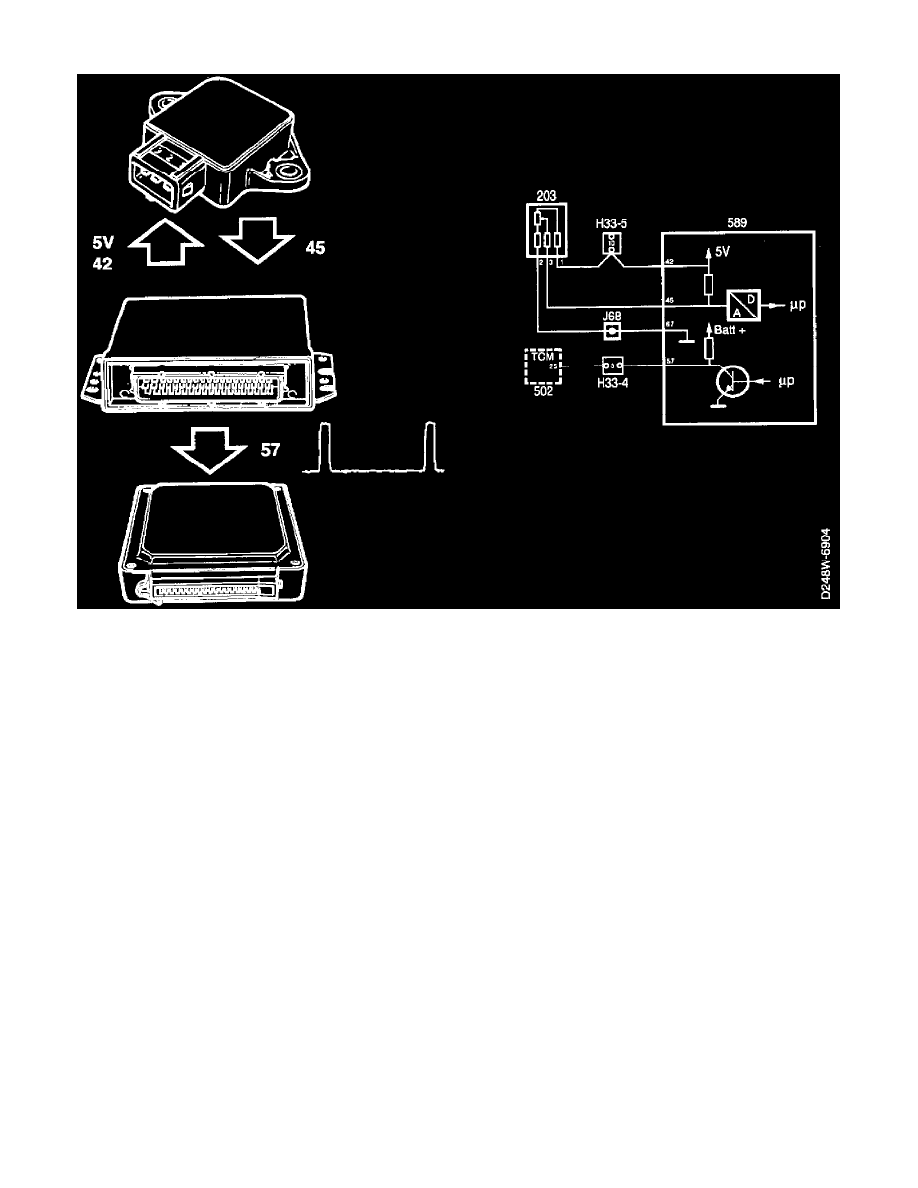900 SE Sedan L4-1985cc 2.0L DOHC Turbo EFI (1996)

Throttle Position Sensor: Description and Operation
The position sensor consists of a potentiometer connected to the shaft of the throttle.
The sensor is supplied with 5 V from ECM pin 42 and is grounded from ECM pin 67. The voltage from the sensor is connected to ECM pin 45 and is
proportional to the accelerator setting.
The voltage is approx. 0.5 V during idling and approx. 4.5 V at wide open throttle. The ECM uses the voltage from the sensor to identify idling, partly
open throttle and wide open throttle. During idling the ECM uses a special ignition control matrix and adjusts the idling speed.
The closed loop is disconnected at wide open throttle.
At wide open throttle in connection with starter motor cranking, fuel injection is switched off.
A richer mixture is supplied during acceleration and a leaner mixture during deceleration.
Maximum boost pressure is also dependent on the position of the throttle. In the event of sensor failure or a break in the circuit, the engine control
module will set wide open throttle as the default value.
Throttle Position Signal
The ECM emits a throttle position signal from pin 57. The signal is a PWM signal of 100 Hz and always has a pulse ratio of 9% during idling (approx.
1.2 V) and approx. 90% at wide open throttle (approx. 12 V).
With the ignition switched on and the engine stopped, the pulse ratio is 2-7% and represents the engine coolant temperature.
The throttle position and temperature signals are used by the automatic transmission's engine control module.
